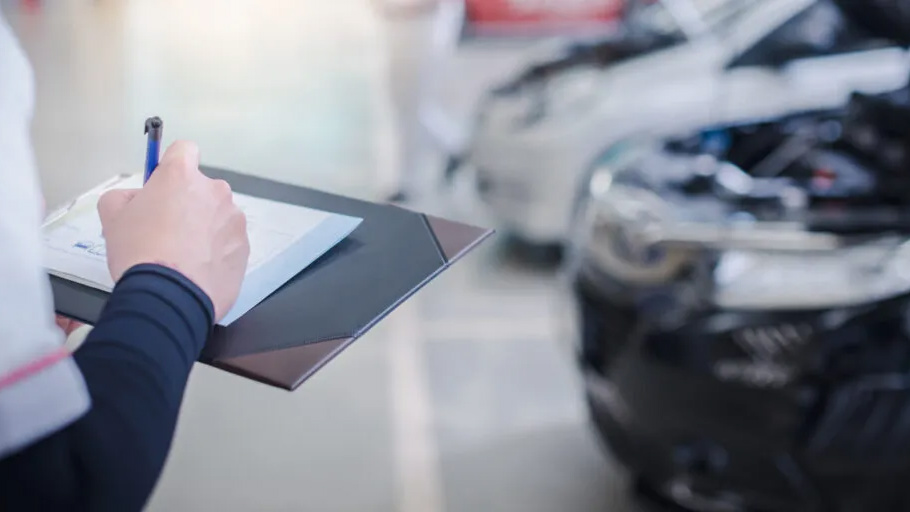When you finally get the keys to your brand-new car, excitement fills the air, and you’re eager to hit the road. However, before you zoom off on your four-wheeled adventures, it’s crucial to conduct a thorough new car delivery inspection. This essential process ensures your vehicle’s safety, performance, and longevity, ensuring a smooth ride ahead.
In this article, we’ll guide you through the simple steps of a car delivery inspection, enabling you to catch any potential issues early on.

What Is A Pre-Delivery Inspection?
A Pre-Delivery Inspection, commonly known as PDI, is a systematic evaluation or a checklist evaluation of a vehicle. Every new car will undergo PDI at least two times in its life cycle before it is handed over to the customer:
PDI by Manufacturer: The car manufacturer will check the vehicle at the factory before sending it to the showroom for delivery.
PDI by Dealership: The showroom will check for any faults in the vehicle before it is handed over to the customer
PDI by Customer: Although this is not a standard practice, it is recommended that customers conduct a checklist inspection of their new car before taking delivery of their vehicle.

In this detailed blog article, we will concentrate on the third step of PDI. The inspection is done to ensure that the car is free from manufacturing defects, damages, or any irregularities that might have occurred during transportation or storage.
Before you can get to the PDI phase, it is essential to have a thorough understanding of the new car being purchased. You can head to DubiCars’ new car section to research more about your next car.
Step 1: Exterior Inspection
- Examine the paintwork for scratches, dents, or any unevenness.
- Check the alignment of doors, hood, and trunk to ensure proper closure and even panel gaps.
- Verify that the windshield and other glass surfaces are free from cracks or chips.
Step 2: Interior Inspection
- Verify that all seats, seatbelts, and headrests are secure and in good condition.
- Inspect the dashboard and control panels for any malfunctions or warning lights.
- Test all infotainment systems, including radio, Bluetooth, and navigation.
- Check air conditioning and heating systems to ensure they are working correctly.
- Verify that windows and sunroof (if applicable) open, close, and seal properly.
Step 3: Electrical Components Inspection
- Test all power windows and mirrors for smooth operation.
- Check the functionality of the central locking system and remote key.
- Inspect the wipers and washers for proper functioning.
- Test the horn and ensure it produces a loud and clear sound.
- Verify that all dashboard indicators and gauges are working as expected.
- Inspect all lights (headlights, taillights, indicators) for functionality and proper alignment.

Step 4: Under The Bonnet Inspection
- Check the engine oil level and condition.
- Inspect the coolant level and concentration.
- Verify the brake fluid level and check for any signs of leakage.
- Ensure the windshield washer fluid is topped up.
- Check the power steering fluid level and condition.
Step 5: Tire Inspection
- Safety on the road depends on proper tyre inspection.
- Use a gauge to check tyre pressure, ensuring it meets the manufacturer’s recommendations.
- Examine the tyres for signs of wear, cuts, or bulges.
- Adequate tyre condition ensures optimal grip and stability while driving.
Step 6: Test Drive
- Take a test drive to assess the engine’s performance and responsiveness.
- Test the brakes for smooth operation and effectiveness.
- Check the steering response and alignment while driving straight and turning.
- Listen for any unusual noises during the drive.
- Observe the transmission for smooth gear shifts.

Step 7: Paperwork & Documentation Inspection
- Check all the vehicle-related documents, including registration papers, warranty details, and user manuals.
- Verify that the Vehicle Identification Number (VIN) on the documents matches the one on the car.
- Ensure that the dealer has provided you with all necessary paperwork and receipts.
- Lastly, ensure you collect the battery warranty card, vehicle manual booklet, service booklet, and duplicate keys for the car.
Ready to hit the road now? Before you do, take a look at the new rules announced by RTA in Dubai.
A new car delivery inspection is an essential step to guarantee a trouble-free and enjoyable driving experience. By following these simple steps and being thorough during the inspection, you can catch any potential issues early on and have them addressed by the dealership. Remember, your safety and the performance of your new car depend on a proper inspection, so don’t rush the process. Take your time, and you’ll be well on your way to many miles of happiness and worry-free driving with your new set of wheels.
Looking to purchase a car? Here is a list of used cars on sale in the UAE and new cars on sale in the UAE.
Also Read:
The post New Car Pre-Delivery Inspection (PDI): 7 Steps To Ensure A Smooth Ride & Hassle-free Ownership appeared first on DubiCars Blog.
from DubiCars Blog https://ift.tt/fnL9BV7
https://ift.tt/DOSneyW